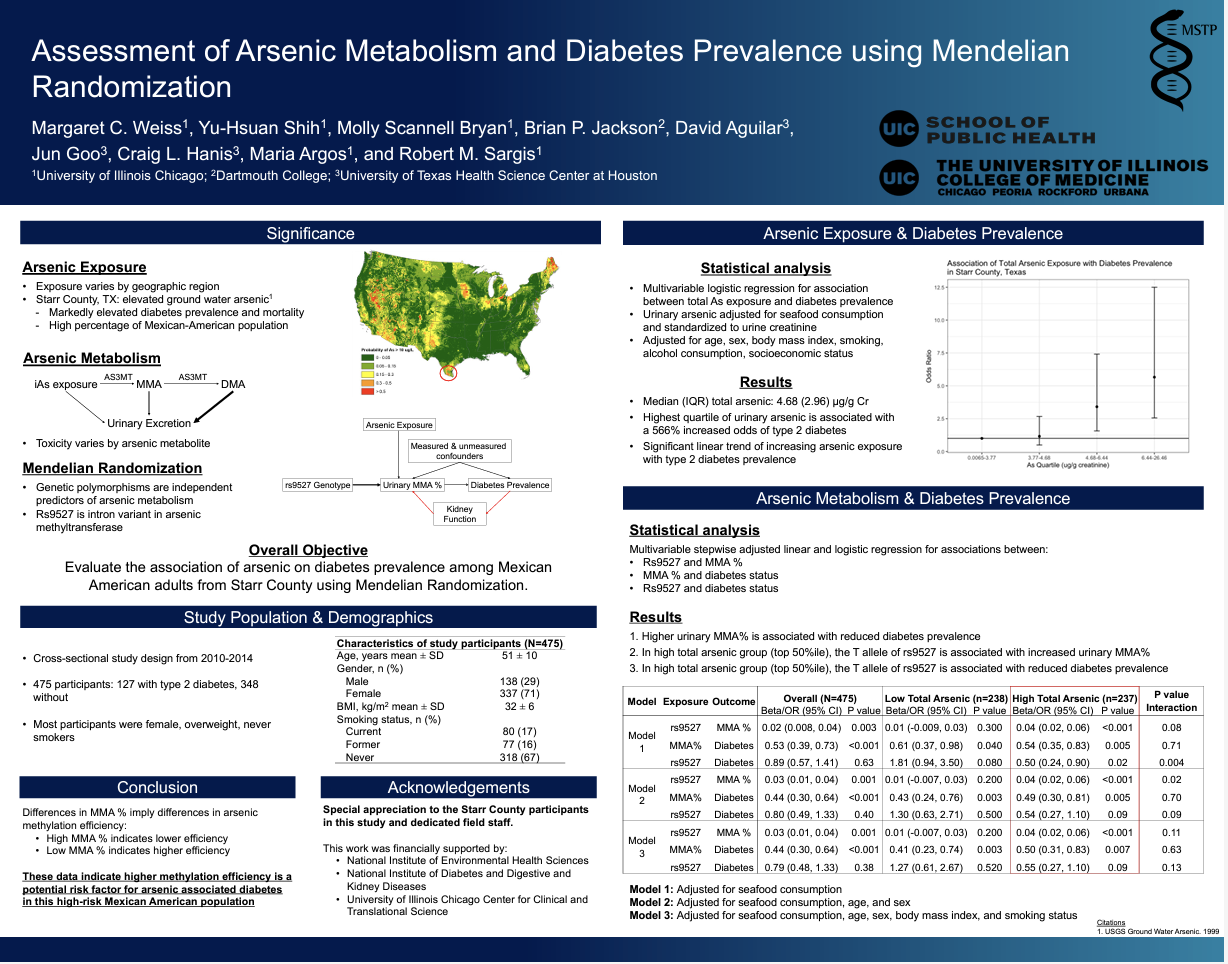Poster # 1
ASSESSMENT OF ARSENIC METABOLISM AND DIABETES PREVALENCE USING MENDELIAN RANDOMIZATION
Co-authors: Margaret C. Weiss, Yu-Hsuan Shih, Molly Scannell Bryan, Maria Argos and Robert Sargis (University of Illinois Chicago); Brian P. Jackson (Dartmouth College); David Aguilar, Jun Goo, and Craig L. Hanis (University of Texas Health Science Center at Houston)
PRESENTER’S INFO:
Name: Margaret Weiss
Email: mschul35@uic.edu
Title: Student
Affiliation: University of Illinois Chicago
Department: Endocrinology
Advisor: Dr. Robert Sargis
Advisor’s Email: rsargis@uic.edu
Abstract:
Background: Starr County, Texas, is a Mexican American community with markedly elevated rates of type 2 diabetes (T2D) and diabetes-associated mortality; it is also a region with higher levels of groundwater arsenic. In epidemiologic studies, urinary biomarker assessment of arsenic metabolism limits cross-sectional evaluation of diabetes prevalence due to an increased risk of exposure misclassification. Polymorphisms in genes for the enzyme arsenic methyltransferase (AS3MT) have been identified as independent predictors of arsenic metabolism and can be used as instrumental variables to minimize this risk.
Objective: This study aims to use using Mendelian randomization to evaluate the associations between arsenic metabolism and diabetes status in 475 adults living in Starr County, Texas.
Methods: We utilized logistic regression to assess the association between total arsenic exposure with diabetes prevalence. A single nucleotide polymorphism in the gene AS3MT, rs9527, was utilized as an instrumental variable to evaluate the association between arsenic metabolism and diabetes status. The results were compared to the associations based on arsenic metabolism using the percentage of urinary arsenic metabolites.
Results: After multivariable adjustment, total urinary arsenic was associated with increased diabetes prevalence. The minor allele of rs9527 was associated with a higher urinary monomethylated arsenic (MMA) percentage. Additionally, rs9527 was associated with reduced diabetes prevalence. Furthermore, a higher proportion of monomethylated arsenic (MMA) was also associated with reduced diabetes prevalence.
Conclusion: Our data indicate that arsenic is associated with increased diabetes prevalence and increased arsenic metabolism efficiency, indicated by lower MMA, which may drive the association among Hispanics/Latinos living in Starr County, Texas. Utilizing a Mendelian randomization approach, these results have a lower risk of residual confounding and exposure misclassification.
Poster: To download / open the poster as a PDF file in a new window click on the image below.
No Fields Found.

